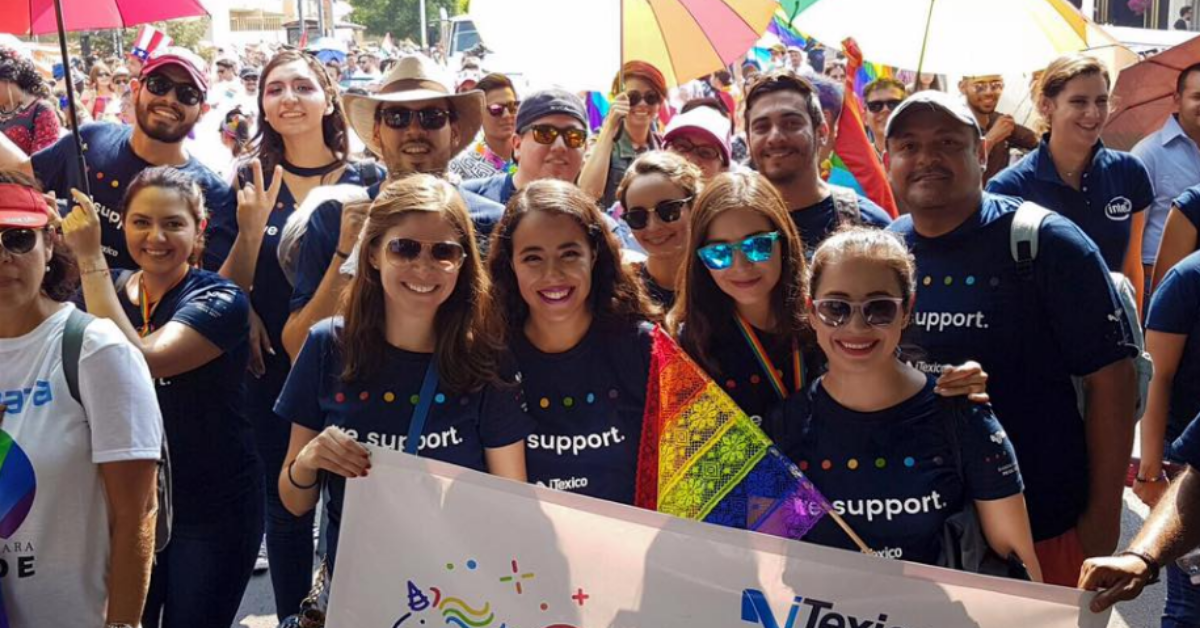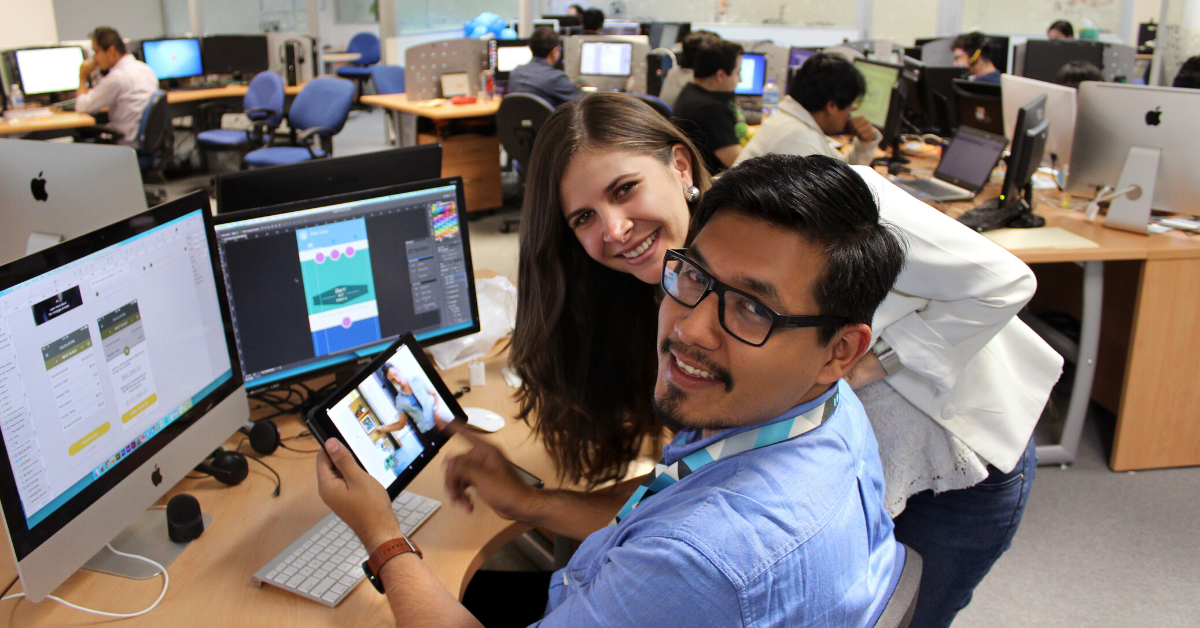Diversity is more than padding out your ethnic portfolio with different skin types. The pervading thought that your workforce must contain a minimum amount of token members to fill out the quota is literally skin deep, neither contributing to the success of your company nor genuinely applying the tenements of what an organization needs to be diverse and inclusive. People, after all, can’t be relegated to a series of boxes on a checklist.
If your company is full of people who look, act, and behave the same, then there has been a dismal failing in the system that led to where you are now. People are male, female, nonbinary, LGBTQ+, Asian, black, disabled, Muslim, Jewish, old, young, from overseas or the house next door - the sheer amount of criteria that goes into what makes an individual unique can’t be summed up in a single sentence. If your workforce doesn’t reflect, to quote late author Terry Pratchett, “the rich and chaotic variety of the human experience,” then it fundamentally falls short of your company’s full potential.
This is, of course, more than just a matter of opinion. Workplace diversity leads to innovation. According to Josh Bersin’s research in the field, inclusive companies are 1.7 times more likely to be innovation leaders in their market. While this can be attributed to any number of factors, the common denominator is that your team members feel empowered when they are empowered and respected by their peers. That can’t happen with acknowledgment, self-reflection, and personal growth.
According to Deloitte, organizations with inclusive cultures are 2x more likely to meet or exceed financial targets. Now, this isn’t something that happens at any simple impromptu notice. The things that prevent us, unconsciously or otherwise, from truly accepting one another are roadblocks that aren’t easy to overcome. This is a process both of learning and unlearning, where biases are addressed and worked on while respect for individuality is emphasized. Diversity and inclusion are more than buzzwords, and need to be taken seriously and understood in the workplace.
In the United States, the Equal Employment Opportunity Commission (EEOC) enforces laws to protect individual employees in the workplace based on specified social categories that commonly face discrimination in American culture. While an excellent source, your organization cannot rely on law in its purest form to guide, mold, and improve the quality of your workforce. This is a process that requires your own initiative to fully realize.
What Is Workplace Diversity?
Like we touched on previously, diversity covers a pretty broad swathe of human traits that get tossed in the soup that makes up who we are. There are a lot of things to consider and be considerate of when embracing someone. Ultimately, workplace diversity is learning about, accepting, and valuing differences between people of the workforce: not discriminating based on race, ethnicity, gender, age, religions, disability, and sexual orientation, with differences in education, personalities, skill sets, experiences, and knowledge bases.
It’s a lot, we know, but it’s vital for the integrity of your workplace relationships as well as exciting to learn and educate yourself on how much of a Pollock painting the existence of every life on this planet is. It’s a sonder experience, wherein you may realize that each passerby is living a life as vivid and complex as your own.
The Society for Human Resource Management (SHRM) defines diversity as “the collective mixture of differences and similarities that include, for example, individual and organizational characteristics, values, beliefs, experiences, backgrounds, preferences, and behaviors.” Your structure is not meat and potatoes, it’s a melting pot where every person involved contributes to a sum greater than the whole of its parts.
What Is Inclusion?
Simply put, inclusion means having and reinforcing a collaborative, supportive, and respectful work environment that increases the participation and contribution of all members. As you might imagine, this is an active approach to enforcing an open, strong workforce, and is a distinctly separate concept from diversity. Diversity without inclusion renders the efforts pointless.
You may find that you’ve achieved a thoroughly filled out complement of diverse individuals, but if the buck stops there then you lose out on the types of valuable insights that make the diversification program unviable and wasted. These are voices that need to be heard, respected, understood and specifically acknowledged with action to provide context for value and inclusion. Tokenism, for example, demonstrates how diversity without inclusion utterly fails: you provide an example of your “diverse” lineup with a single representative individual. How much actual weight does that voice actually hold?
According to SHRM, inclusion is “the achievement of a work environment in which all individuals are treated fairly and respectfully, have equal access to opportunities and resources, and can contribute fully to the organization’s success.” Only when this balance of diversity and inclusion in the workplace has been struck can company-wide growth be launched.
How to Achieve an Inclusive and Diverse Workplace?
That’s the tricky question, isn’t it? We’ve impressed the importance of diversity and inclusion, but the road there is an entirely separate path indeed. Like all things worth doing, investing in the quality of your workforce isn’t a task to be taken half-heartedly. What we can offer to get things going are a few suggestions of strategies you should take to expound on the principles of a diverse and inclusive workplace.
1. Offer Inclusion Training
Training is an essential part of preparing your environment to condone, accept, and proactively include a variety of people. This will result in some changes that need to be made in the already extant structure. You cannot have an inclusive workplace if you don’t first prepare your HR department to recruit without bias and discrimination. Much of what prevents new growth into diversity is derived from unconscious biases and archaic qualifiers.
Training helps raise awareness, eliminate bias, and create a common language to facilitate diversity and inclusion discussions. Starting with HR makes it easier for expansion into the rest of your workforce. This is, after all, a company-wide strategy, which means every employee will have to do their due diligence to get this off the ground.
When training the rest of your workforce, start with C-level and management positions. These are the designated leaders, and the responsibility of successful integration falls on their shoulders. Those who lead and ensure that inclusion is respected will be among the first in line to handle instances of exclusion, mistreatment, and unacceptable behavior in the workplace, making their positions pivotal.

2. Recruit Without Bias
The screening process for new employees will be no stranger to alteration. One way to make sure your company is recruiting without bias is to reinforce HR and get your company’s leaders involved in the screening process. Remember that consensus must be built through open conversation, and creating a tie between diversity/inclusion and the business strategy.
“Across our recruiting and onboarding processes, we talk openly about our inclusive and diverse culture so that any iTexican or future iTexican feels this openness regardless of their sexual orientation, sexual identity, race, religious beliefs, etc.” says iTexico’s Talent Management Specialist, Armando López, a proud member of our LGBT community.
You may expect that your recruitment process will get a tad bit more complicated with these new policies. After all, you’re not just looking at GPA, degrees, and prior work experience anymore. The types of experience that these individuals have experienced from any walks of life are important considerations to account for. Keep in mind that diversity is an asset that comes in a multitude of forms.
3. Create Employee-Led Committees
A functioning company is not led by the strength of the hammer, at least not anymore. Employees are not silent serfs who work for a paycheck, and the concept that an employee is easily replaceable is outdated to say the least. With this established, supplying your employees with a voice of their own not only provides a sense of security within your teams, it submits the aura of acceptance and understanding you’re searching for.
First up: committees. Establish committees with voluntary employee-led groups that have shared characteristics or life experiences. These provide a safe space to have open dialogue and provide a helpful source to hear from diverse group sets. Proffering the opportunity for developing bonding groups between employees acts as an empowering means to involve your team members in an environment they feel protected and secure in.
While in essence it’s an act of human decency and appreciation, this type of treatment still results in improved performance and productivity. Boosting company morale leads to a healthier, stronger workplace environment, translating directly to improved business.

4. Openly Discuss Inclusion Topics
This is one of the most important assets that these inclusion committees can provide to your workforce: discussion. There was a time very much in living memory where discussion of anything related to race, sexuality, religion, and so on was grounds for firing, creating a dangerous and hostile environment for many people from a background that didn’t fit with the status quo of the day. While these days are not completely behind us yet, it’s important that you be among those that have grown toward greater understanding.
With the provided space to be freely open about these discussions, give your employees the opportunity to talk more about their struggles, needs, identities, etc. An inclusive company must provide the environment and the opportunity for open conversations and understanding. The moment that even a single employee feels unsafe discussing something personal to themselves occurs, then the system must adapt to ensure they can regain that confidence and security.
“At iTexico, we hold public activities to support inclusion, such as pitches by iTexicans, workshops, participation in Pride parades, etc., as well as groups and committees to support inclusion and diversity. Our LGBT community is vast and we make a conscious effort to make them feel protected and free to be themselves at all times.” - Talent Management Specialist, Armando López.

5. Hold Your Company Accountable to Compete and Win in External Award Programs
All the talk means nothing without the action. In order to be truly inclusive, your organization must participate actively to improve the minorities communities and work towards certifications and award programs. Keep in mind that, while these accolades prove your commitment to your communities in the workplace, they are not the end goal. You are not using these proceedings to put a plaque on a wall, you’re using them to create a better, happier, more successful workplace. These awards are nothing more than proof that you are true to your word and value your employees in all their complexity.
“At iTexico, we comply with all conditions and requirements to be recognized by the Human Rights Campaign Foundation as a 2020 Top LGBT Inclusive Company, for example. Through this recognition, iTexico reflects its commitment towards the LGBT community and the adoption of essential inclusiveness practices and policies across our innovation centers.” - Talent Management Specialist Armando López.
Conclusion
The diversity of your workplace is not an act of pandering or forced recruitment, it’s an act of improving the health and wellbeing of your employees while simultaneously markedly growing your company. There are systemic limitations in the current system of virtually every business that has restricted the diversification and inclusivity of every workplace, thereby reducing the effectiveness and progressiveness of those companies as a result. It’s time to make efforts to correct that.
This is a task that’s going to take time to fulfil, but it’s fruits are well worth it. It’s important to keep in mind the steps you’ll need to take to get underway:
- Offer inclusion training
- Recruit without bias
- Create employee-led committees
- Openly discuss inclusion topics
- Hold your company accountable to compete and win in external award programs
Given time, the results will prove themselves with an organization that embraces the value and uniqueness that humanity has to offer.
iTexico prides itself on being among those taking the steps to truly incorporate diversity and inclusion in the workplace. If you’re interested in learning more about our programs and communities here at our company, we invite you to visit our LGBT Inclusive Workplace section on our website.



Post Your Comment Here